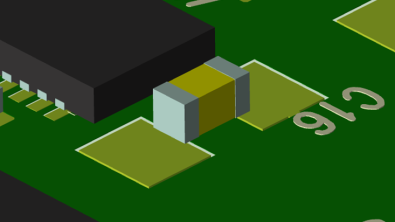Can you accelerate the selection of alternate components?

This blog was written by Chad Jackson, Chief Analyst & CEO at Lifecycle Insights, and comments have been provided throughout by Stephen Chavez, one of our own product marketing managers. Check it out and join the conversation below!
Today’s electronics manufacturers must work on tight schedules to remain competitive. Any delays in product delivery or launch can lead to significant—and sometimes unrecoverable—financial impacts to the company. Late-stage electronic component replacement is a major cause of such delays. When companies are forced to replace a part late in the game, they often act desperately, paying a premium to source an acceptable substitution. But organizations do not have to be held hostage to late-stage spot buys. By implementing a resilient, connected supply chain approach, they carefully consider or altogether avoid disruptions before costs run too high.

I love this paragraph! In my latest webinar, I shared my recent experience of feeling what I refer to as the “supply-chain pain.” Although it wasn’t catastrophic to the company, the supply-chain disruptions caused havoc to the entire project team, which negatively affected the project schedule, budget, risks and ultimately the company’s bottom line cost of doing business. We could have used supply chain resilience at the point of design. Amazing how fast we learn from felling the pain just once…
Stephen V. Chavez, MIT, CPCD, CID+ | Sr. Product Marketing Manager
Delays due to costly late-stage electronic component replacement
Late-stage component replacement is an increasingly common problem. A full 73% of respondents to Lifecycle Insights’ 2022 Electronics Design for Resilience (EDfR) Study reported they must remove at least one electronic component from each printed circuit board (PCB) design due to supply, lifecycle, or compliance issues. Some stated they need to replace components an astonishing 20 times or more per board project.
These electronic component replacements not only cause significant delays but are incredibly costly. Some of the potential expenses include:
- The time required to locate and approve replacement parts;
- Additional premiums on component costs associated with late-stage spot buys;
- The time and resources associated with PCB design rework and validation when component footprints are different;
- The need to re-collaborate with mechanical engineers and create new deliverables with mechanical computer-aided design (MCAD) tools;
- The PCB fabricator’s ability to pivot in the face of a new design and deliver the updated board when schedules are already at capacity; and
- Postponed product delivery and time to market (TTM) dates.

73%? I’m surprised it’s not a higher percentage. I can attest to everything stated in this paragraph just from my recent project experience alone. There were sections where design circuits were replaced or redone about a dozen times. Believe me when I say the ripple effect of supply-chain disruptions goes deep and comes with negative consequences. Refer to my recently published white paper, webinar and two-part series article for a deeper insight to these supply-chain disruptions.
Stephen V. Chavez, MIT, CPCD, CID+ | Sr. Product Marketing Manager
The necessity of supply chain collaboration
Efficient, cost-effective PCB design depends on the ability to select components at the onset of the project based on real-time supply data for availability, pricing, and performance. When organizations can do so, they avoid delays as well as any unknowns that come with the use of a traditional, linear, sole-source flow for parts. Lifecycle Insights’ EDfR Study found that 76% of organizations have moderate to high difficulty getting notifications when a component is no longer (and often unexpectedly) out of stock. When specified parts are no longer available, and there is no pre-approved alternate, companies must rely on spot buys. These spot buys from component suppliers and PCB manufacturer stock rooms can be extremely costly, impacting profits.

Legacy workflows and methodologies make it difficult to adapt to today’s supply-chain disruptions. External data touch points of component intelligence are just that… external! That information comes too late in the process. What is missing is the supply-chain insight and visibility to real-time component intelligence. Intelligence that is needed at the point of design so that engineers can make more informed and intelligent decisions further upstream in the process leading to less delays, lower cost and lower risks.
Stephen V. Chavez, MIT, CPCD, CID+ | Sr. Product Marketing Manager
Successful PCB design and verification is a collaborative effort. It is very common for data to be exchanged between electrical computer-aided design (ECAD) and MCAD platforms. When a design component must be replaced with an alternate part, engineers must consider multiple factors. For example, engineers must compare the unavailable part to other models previously used. This will help to ensure the design will meet, for example, the required height for the product assemblies and still pass clearance rules.

Good engineering teams producing successful PCB design and verification have very good multidiscipline collaborative efforts. We need to break down the barriers of siloed functioning teams and adapt to a more integrated collaborative team approach of designing PCBs.
Stephen V. Chavez, MIT, CPCD, CID+ | Sr. Product Marketing Manager
PCB fabricators typically have limited capacity—and are locked into adhering to strict schedules to meet all of their customers’ expectations. When electronic component replacement issues arise, the design project will halt until issues are resolved. In a best-case scenario, that production stop is limited to a single component replacement. In the worst case, the entire PCB design will need to be modified. This will involve a board revision, repeating pre-fabrication design for assembly (DFA)/design for manufacturing (DFM) verification checks, and recreating fabrication data files. All of this will delay the fabrication start. That means that everything associated with the product launch will be impacted, including revenue.
More than half (52%) of respondents to Lifecycle Insights’ 2022 EDfR Study reported that their company revenue was impacted by sourcing issues. The costs add up. For example, changes to a pre-scheduled marketing campaign could have a price tag in the millions of dollars.

Having component visibility and insight, better known as supply-chain resilience, at the point of design will help mitigate or potentially prevent issues described here in this paragraph. In a perfect world, a single point failure or sole source would not exist, but it does, and we do our best to mitigate such issues. Having alternates or multiple sources is important and plays a vital role in our design process. With more than half of the respondents of this survey stating their company revenue was impacted by sourcing delays speaks volumes to how these issues are negatively affecting us all.
Stephen V. Chavez, MIT, CPCD, CID+ | Sr. Product Marketing Manager
How automation accelerates alternate component decisions
Supply chain intelligence provides real-time component data to help companies make appropriate selections for alternate parts at the very beginning of a project based on accurate parametric, compliance, pricing, and supply data. Supply chain intelligence also gives companies the ability to perform the analyses necessary to make appropriate pricing and fabrication trade-offs. Then they can ensure that any disruption will have a minimal impact on the product launch schedule.
Organizations can select alternate components based on package data and land pattern dimensions that are within design specifications. This eliminates time-consuming and costly design respins should the preferred component become unavailable.
Having a design flow strategy that supports supply chain intelligence at the point of design can help ensure a more resilient supply chain. When engineers have intelligence that allows them to consider component alternates at the earliest stages and then throughout the design phase, companies are in a better position to meet deadlines. They can be more confident that product delivery will stay on plan and within budget.

Supply-chain intelligence is important and part of the solution, but not the solution on its own. Bringing this intelligence to the point of design is key to the overall success. When we think about a complete supply-chain resilience solution, it needs to seamlessly connect the whole of a DESIGN organization with the electronics ecosystem (SUPPLY and MANUFACTURING) they depend on to bring a successful product to market. At the heart of the solution is continuously updated, comprehensive component intelligence. For the DESIGN organization, an integrated source of AI-enabled data will be used to empower better decisions across the entire product lifecycle: at the point of component research and selection, at the point of part creation, at the point of design capture, at the point of the bill of materials (BOM) review and analysis, at the point of product portfolio review, at the point of sustaining engineering, and all the way through to product End of Life (EOL).
Stephen V. Chavez, MIT, CPCD, CID+ | Sr. Product Marketing Manager
Intelligence for more resilient supply chains
Today’s electronic manufacturers are working with an uncertain and volatile supply chain that can negatively impact schedules, costs, and product launch plans. As a result, late-stage component replacement is an increasing problem in PCB design. Robust, real-time supply chain intelligence can help. When companies can implement such intelligence through deployment of a digitally integrated multi-domain supply chain solution, they can mitigate supply disruption from the earliest days of design. This supports better collaboration between manufacturers and suppliers, and also provides key intelligence that will help manufacturing organizations avoid costly and unexpected late-stage respins.

The need to adapt to today’s supply chain disruptions with new methodologies, optimized cross-functional domains and collaboration between disciplines is paramount in the quest for success. As we are working with an uncertain and volatile supply chain that can negatively impact schedules, costs, and product launch plans, we need to be open to new methodologies and updated optimized processes as the need to incorporate supply-chain resilience at the point of design. Refer to my recently published white paper, webinar and two-part series article for a deeper insight to the three keys to resilient design: Knowledge, Intelligence, Optimization. A three phased approach solution.
Stephen V. Chavez, MIT, CPCD, CID+ | Sr. Product Marketing Manager


